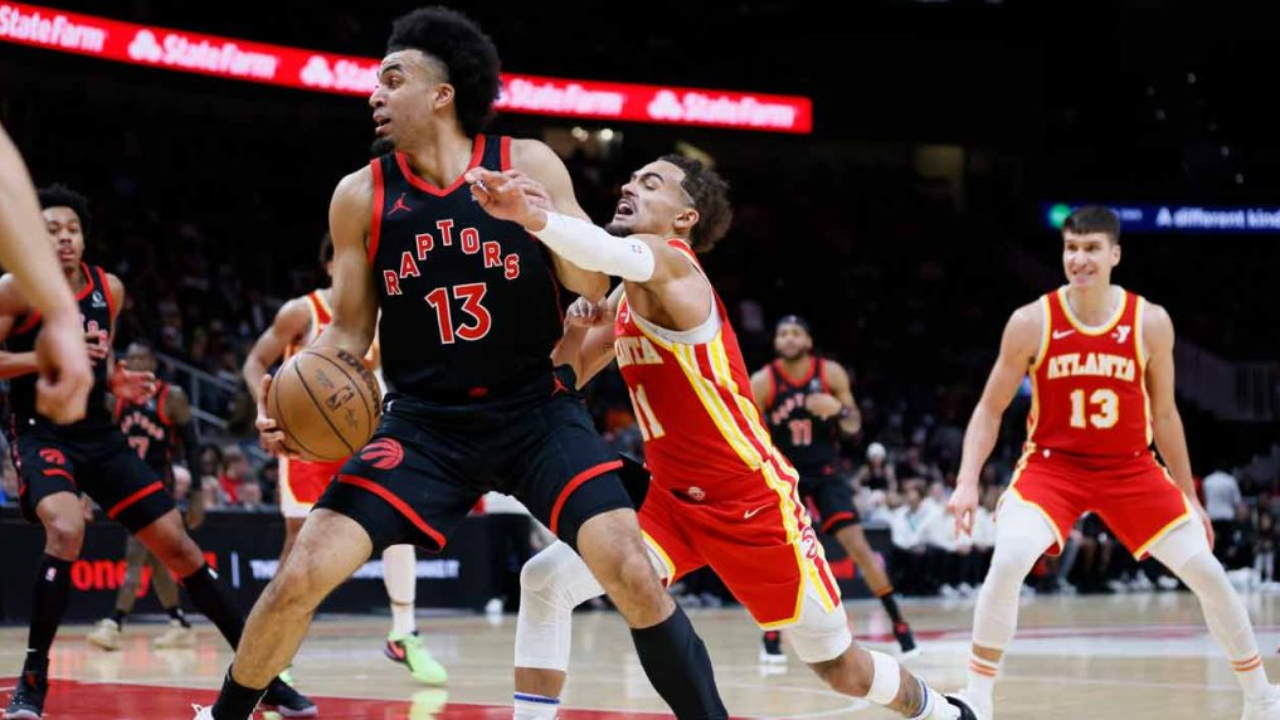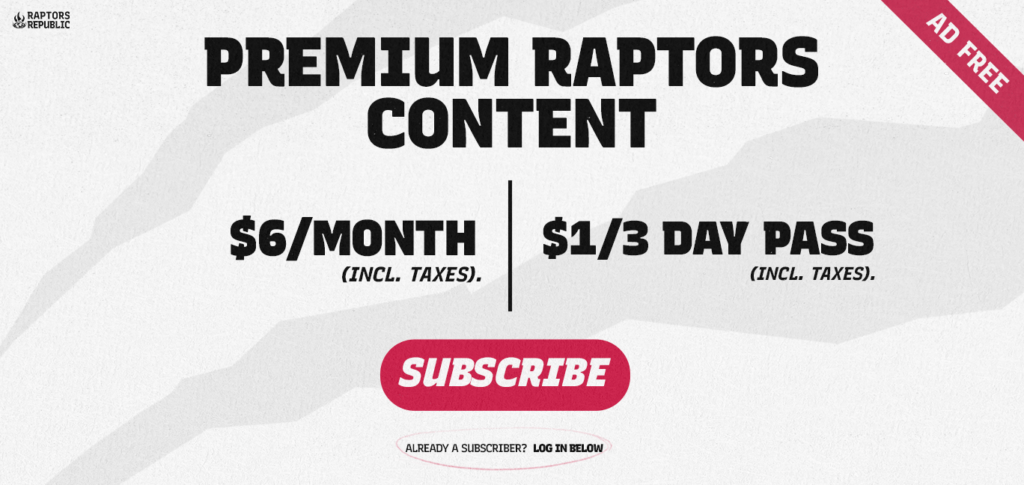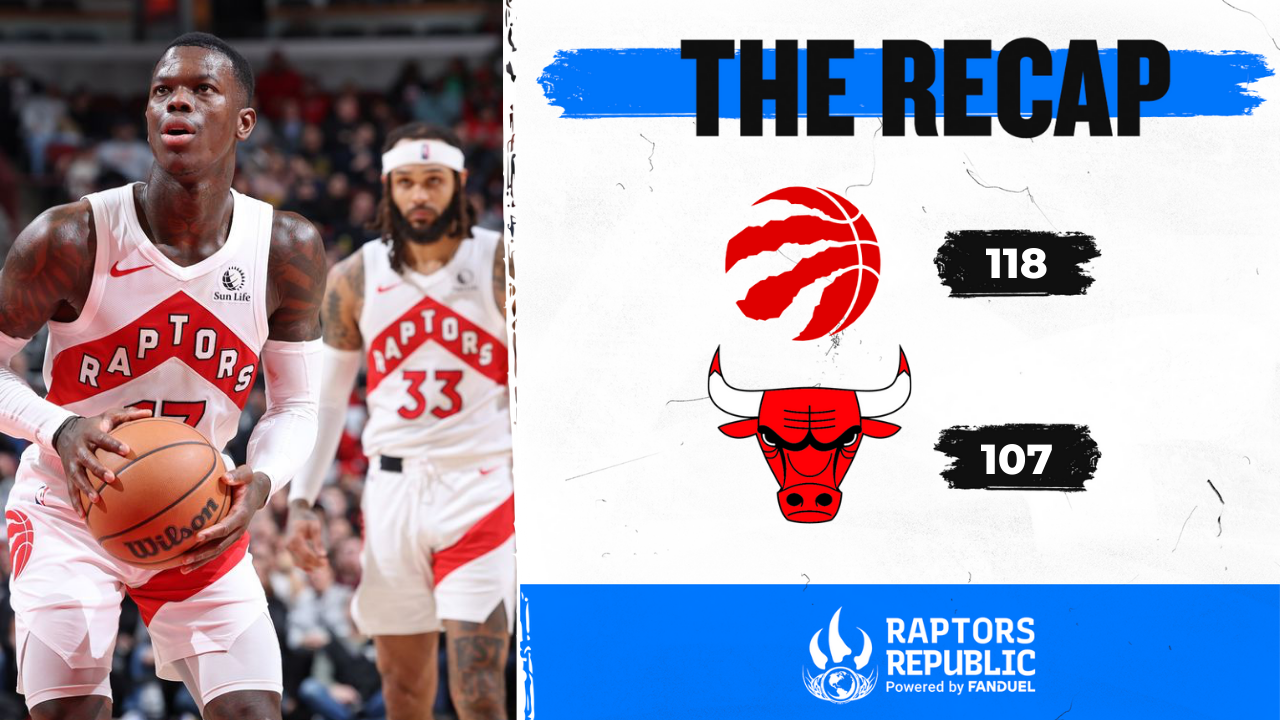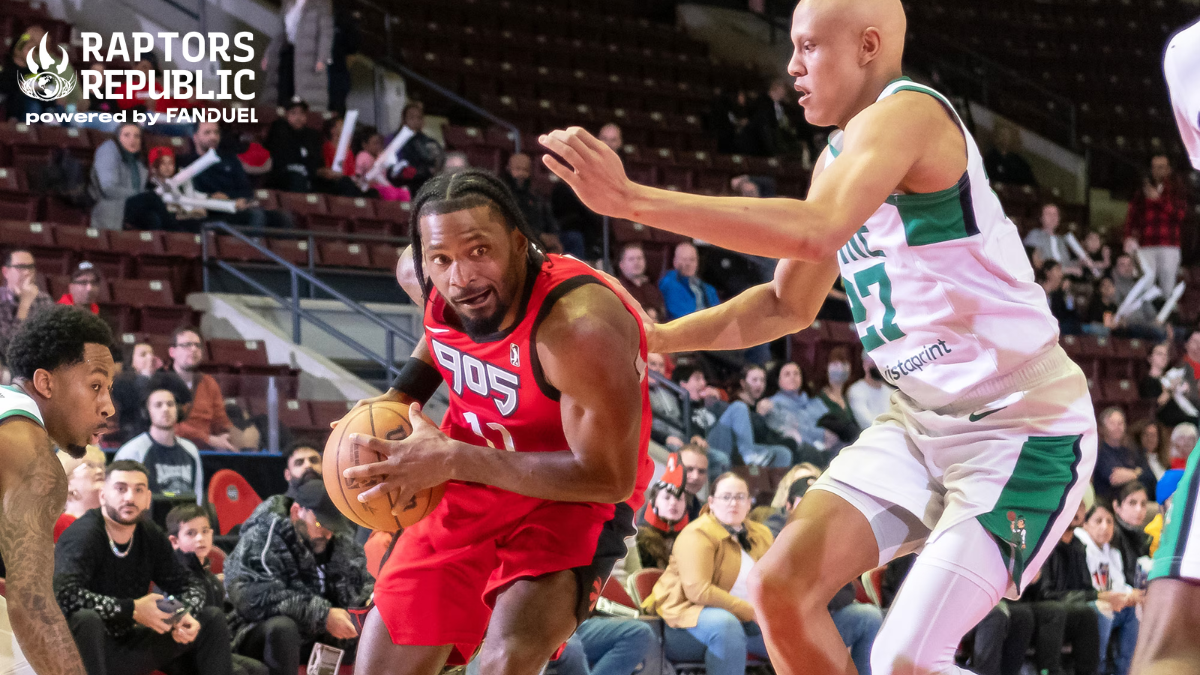It didn’t take Jontay Porter and Jordan Nwora long to make magic together. The two played together for the first time in the Toronto Raptors’ loss to the Atlanta Hawks, entering the game in the first quarter. It happened so fast you might have missed it. Porter threw an assist, splashed two triples, and then hit free throws. The second quarter began. Nwora hit two triples of his own. While the Raptors lost, they won the 17 minutes with both Nwora and Porter on the floor by 16 points. It was magic, beautiful magic: a young and energetic bench driving winning, if for a short time.
For a long time the Raptors found gems late in the draft or outside of it entirely, and then they stopped doing so. Norman Powell and Chris Boucher and Fred VanVleet became Jalen Harris and Dewan Hernandez and David Johnson. It’s hard to find rotation players where other teams do not, but the Raptors did so, over and over.
And it’s possible that they are once again.
Porter went undrafted in the 2019 draft and signed with the Memphis Grizzlies in 2020. His knees were not doing well, having suffered so many injuries that he wanted to quit basketball. He didn’t stick in Memphis. He bounced around the G League and eventually signed a two-way deal with the Raptors in December. Ron Harper jr. had filled the spot, but the Raptors opted to sign Porter after Harper suffered a season-ending injury. It was a quiet beginning to his Raptors career. (If you want to read more about Porter’s journey, Blake Murphy’s feature on him, linked here and above, was predictably fantastic.)
Nwora, on the other hand, was drafted to the NBA. The Milwaukee Bucks chose him 45th in the 2020 NBA draft, and he played over 1000 minutes in each of his second and third seasons. (Porter played 54 minutes total for the Grizzlies.) Nwora had seen opportunities. But the Bucks dealt him to the Indiana Pacers as part of a jumbo deal that brought Jae Crowder to town. And then the Pacers traded him to Toronto in acquiring Pascal Siakam.
The knocks on both were clear. Porter is undersized for a center and slow for a power forward. He has athletic limitations, particularly given the knee injuries, which leads to inefficiency around the rim. Nwora lacks a clear feel for the game, particularly in making reads other than 'shoot.' There are reasons why neither have hit as rotation players in their years in or around the NBA. Yet both are shooters, and they are young. Still, it was not clear that they would do this upon entering the rotation for Toronto.
Porter has popped as a passer for the Raptors. He has averaged 2.1 assists per game, but that puts him in the top 10 among centers for assists per 36 minutes. He’s done it in lots of ways -- out of delay actions, finding backdoor cutters, throwing blind swings to shift the angle of attack, in transition, as a big-to-big connector. Everything. He has great feel for when to continue within the confines of a set play and find teammates, and when to circumvent an action and drive or pop the ball elsewhere. When he touches the ball, teammates start buzzing around -- a sure sign of a trusted passer.
Despite the reputation as a shooting big, Porter has only hit 33.3 percent of his triples in Toronto. And he’s shooting only slightly better inside the arc (39.3 percent). But he fires them up and draws attention on occasions. At the very least, he draws the center defender further outside the paint than someone like Jakob Poeltl, if not all the way to the perimeter yet. I imagine his 3-point shooting nudges upwards -- he has been shooting with hesitation, trying to be a good teammate and pass first. As he gets out of his own head, he’ll have better preparation into shots. He was terrific against the Atlanta Hawks when he shot without any hesitation. Even if he remains inefficient as a scorer, he’s a solid screener and offers enough with the passing to help on the offensive end.
Defensively, Porter is a magnet for the ball while it’s still in opposing hands. He has great block and steal rates, even for a big -- he’s averaging 2.0 blocks and 2.0 steals per 36 minutes. But he’s an overmatched backline rim protector, and he’s not cleaning up others’ mistakes. Opposing teams are shooting very efficiently with Porter as the primary defender within the paint. He is not a great rebounder, especially for a center. He is great at getting the Raptors in transition, but if opponents are getting a shot up, Porter isn’t doing a whole lot to end possessions, which involves both forcing a miss and grabbing a rebound.
He has mostly played drop, but he has held up at points as a switch big. His aggressive assaults on the ball when switching can force negative dribbles, pickups, and lots of turnovers.
All this points to Porter being overmatched as a starting center. That’s fine! Two-way players aren’t supposed to start. But if he plays 15 or 20 minutes a game against opposing benches, throwing dimes and getting the Raptors in transition, switching against non-stars, he could do much to help Toronto win minutes. He has played like a rotation player. And the Raptors found him on the periphery, not spending a draft pick or other players in a trade to acquire him. This is a win for the front office, and, most of all, for Porter himself, who is finally entrenched in an NBA home. He has earned this, and he should be rewarded with a full, multi-year contract after the trade deadline so the Raptors can keep him in house.




